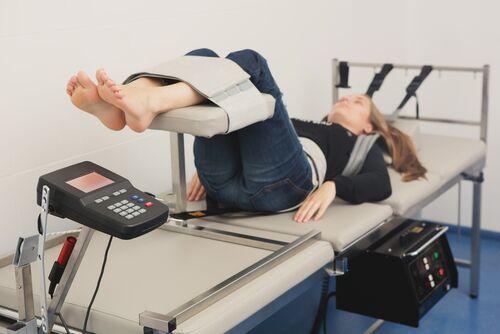What to Expect During Spinal Decompression Therapy

If you have pinched nerves or bulging discs causing pain in your lower back or neck, your back doctor might recommend something called spinal decompression therapy. This therapy comes in several forms, but the main idea is to use a device that slowly stretches your spine, allowing all the discs to realign, and creating space for nutrients to move freely. If you have never experienced this type of therapy in the past, you might be wondering what to expect from your first appointment.
Before You Arrive
In many cases, your doctor will recommend that you drink plenty of water before you arrive. Proper hydration will go a long way toward making the process more productive by ensuring that your body is prepared to stretch without cramps or other issues. Your doctor may also give you supplements to take in advance so that your body will have everything it needs to make the most of the stretch.
During the Session
During your spinal decompression appointment, you will be strapped to a machine laying down. These machines vary in design, so your doctor will tell you which way to lay. Once you have been secured safely to the machine, it will begin to apply slow and gentle traction while extending your spine. The machine will work through a series of incremental stretches on the way to a full stretch, depending on your current range of motion. A typical session lasts up to 45 minutes, cycling through stretching and relaxing intervals.
After Your Session
After you have completed your session, your doctor will remind you to drink more water to give your back muscles time to repair themselves. In addition, they will likely give you a few exercises to practice at home between your therapy sessions. This will encourage continued progress and prevent regression during your daily routine. In some cases, your doctor may recommend cold packs or a heating pad to help relax your muscles after treatment and prevent inflammation.
For the most part, spinal decompression therapy requires very little from the patient. Your job is to make sure that your body is properly hydrated and full of healthful nutrients so that the traction and decompression equipment can do its work. It is important that you continue to stretch between appointments and work with your back doctor to address any difficulties through your treatment. To learn more about spinal decompression therapy, contact Royal Spine today and speak with our experts.
About The Author
-

Dr. Abdulhamid is a highly skilled and experienced board-certified neurosurgeon with a passion for providing exceptional spine care. He specializes in minimally invasive spine surgery and has a reputation for achieving outstanding results for his patients. His commitment to excellence and patient-centered approach have earned him the trust and respect of his patients and colleagues alike.
RECENT POSTS
Three Reasons to Turn to Physical Therapy for Back Pain
Did You Know: Your Diet Could Be Contributing to Back Pain?
Exploring the Types of Back Surgery: A Comprehensive Guide
What to Expect During Spinal Decompression Therapy
Tips on How to Maintain Good Spinal Health
How You Can Protect Your Lumbar Vertebrae
Reasons to Discuss Your Back Pain With a Doctor
Understanding Dorsalgia: Causes, Symptoms & Treatment
How to Relieve Lower Back Pain at Home
What is Lumbago? Causes, Symptoms & Treatment
What To Do When You Experience Neck Pain
What Is Ultrasonic Spine Surgery?
How to Do Back Exercises for Back Pain
Ouch! Lower Back Spasms - Causes and Treatments
Why Have I Developed Back Pain After Surgery?
The Purpose of Spinal Decompression Surgery
Three Common Causes of Lower Back Pain
How to Prevent Back Pain at the Office
The Best Ways to Sleep With Back Pain
5 Daily Exercises for Better Spine Health
Is Your Mattress Causing Your Back Pain?
Supporting Back Health While Golfing